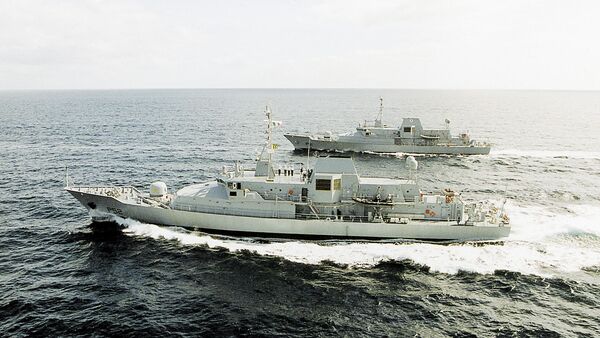
The Irish Naval Service has decided to place its two 1,700 tonne Róisín (PV 80)-class OPVs into operational reserve as a result of ongoing staffing shortages. (Irish Navy)
The Irish Naval Service (INS) has been forced to mothball its two Róisín (PV 80)-class offshore patrol vessels (OPVs) as a result of ongoing recruitment and retention issues.
An Irish Defence Forces (IDF) spokesperson confirmed to Janes that LÉ Róisín (P 51) was placed into operational reserve with effect from 31 January and that LÉ Niamh (P 52) would be placed into operational reserve on the completion of its mid-life upgrade (MLU) later this year.
“The decision to place LÉ Róisín and LÉ Niamh into operational reserve is aimed at stabilising operational delivery and assisting in the Naval Service regeneration, which entails the prioritisation of personnel training and development of existing INS personnel,” the spokesperson said. “LÉ Róisín and LÉ Niamh will remain in operational reserve until such time as the Naval Service has sufficiently regenerated suitably qualified and experienced personnel.”
The move will leave just four remaining patrol vessels – the 2,256-tonne Samuel Beckett (PV 90)-class OPVs – in active service. Despite this reduction in capability, the INS said it remained confident that it could continue to fulfil its maritime security and defence commitments until the situation was resolved.
As with the wider Irish Defence Forces, the INS has been struggling with staffing shortages for some time and has already introduced a number of measures to address the challenge, the spokesperson said.
Looking to read the full article?
Gain unlimited access to Janes news and more...
